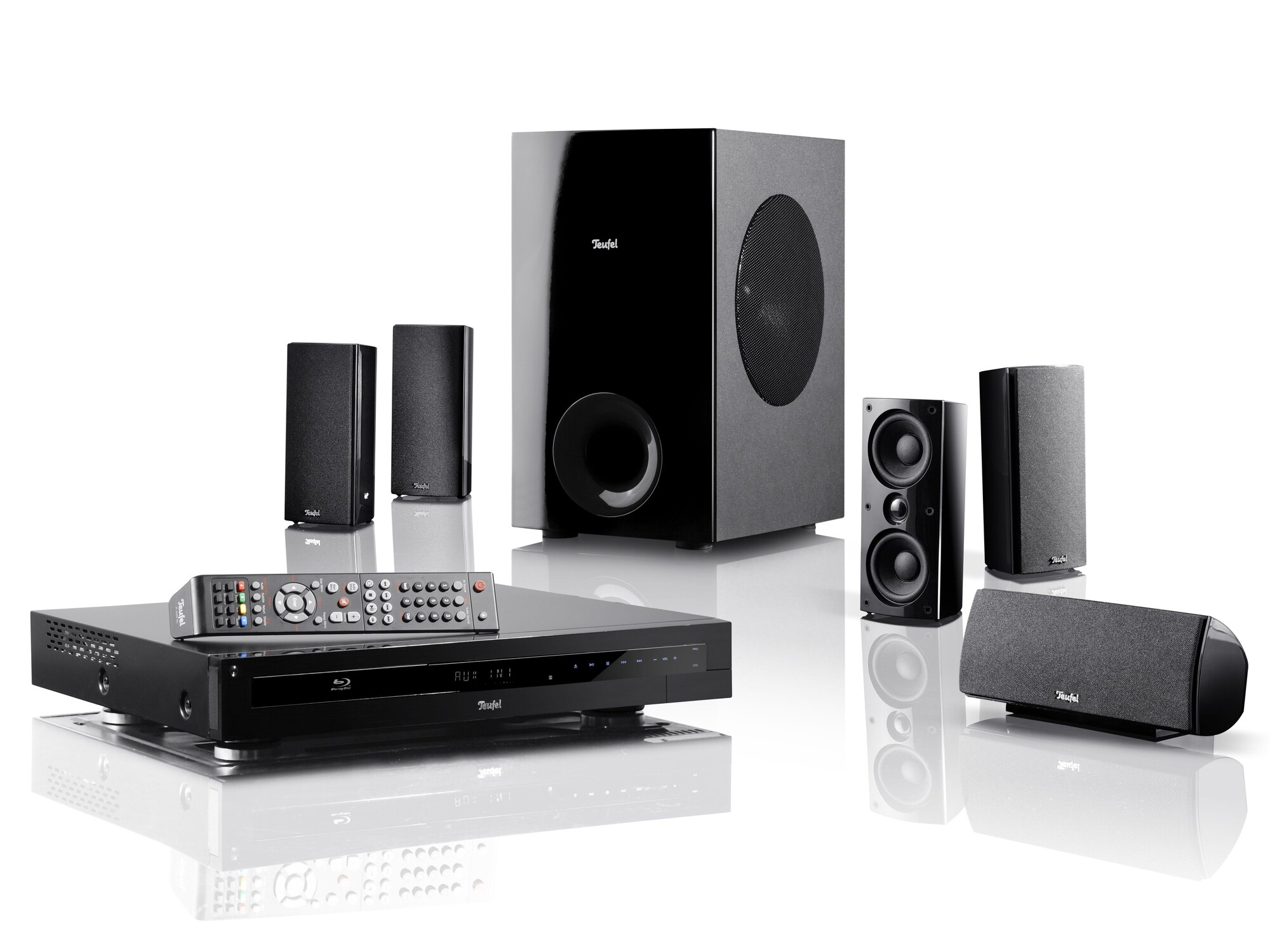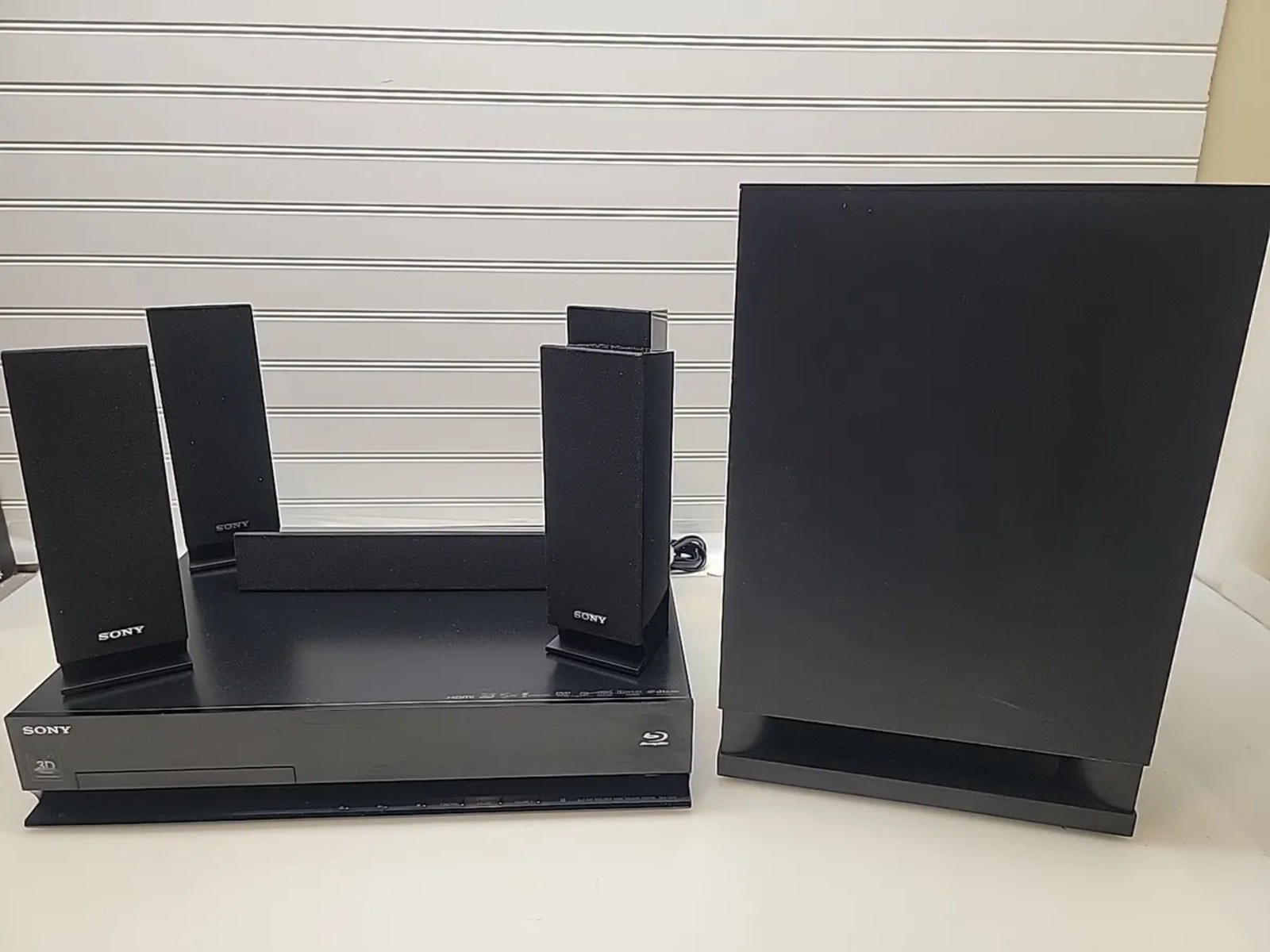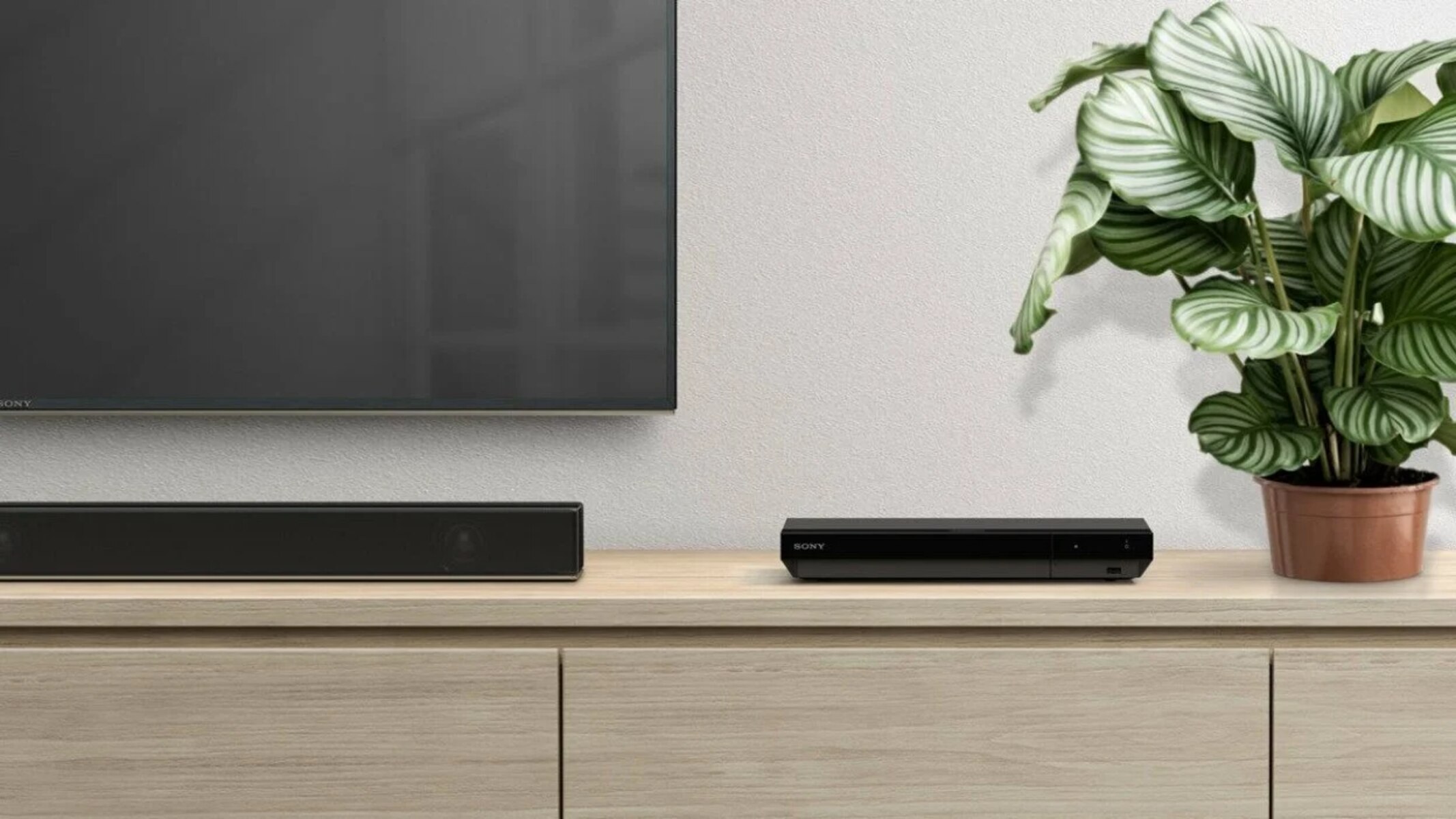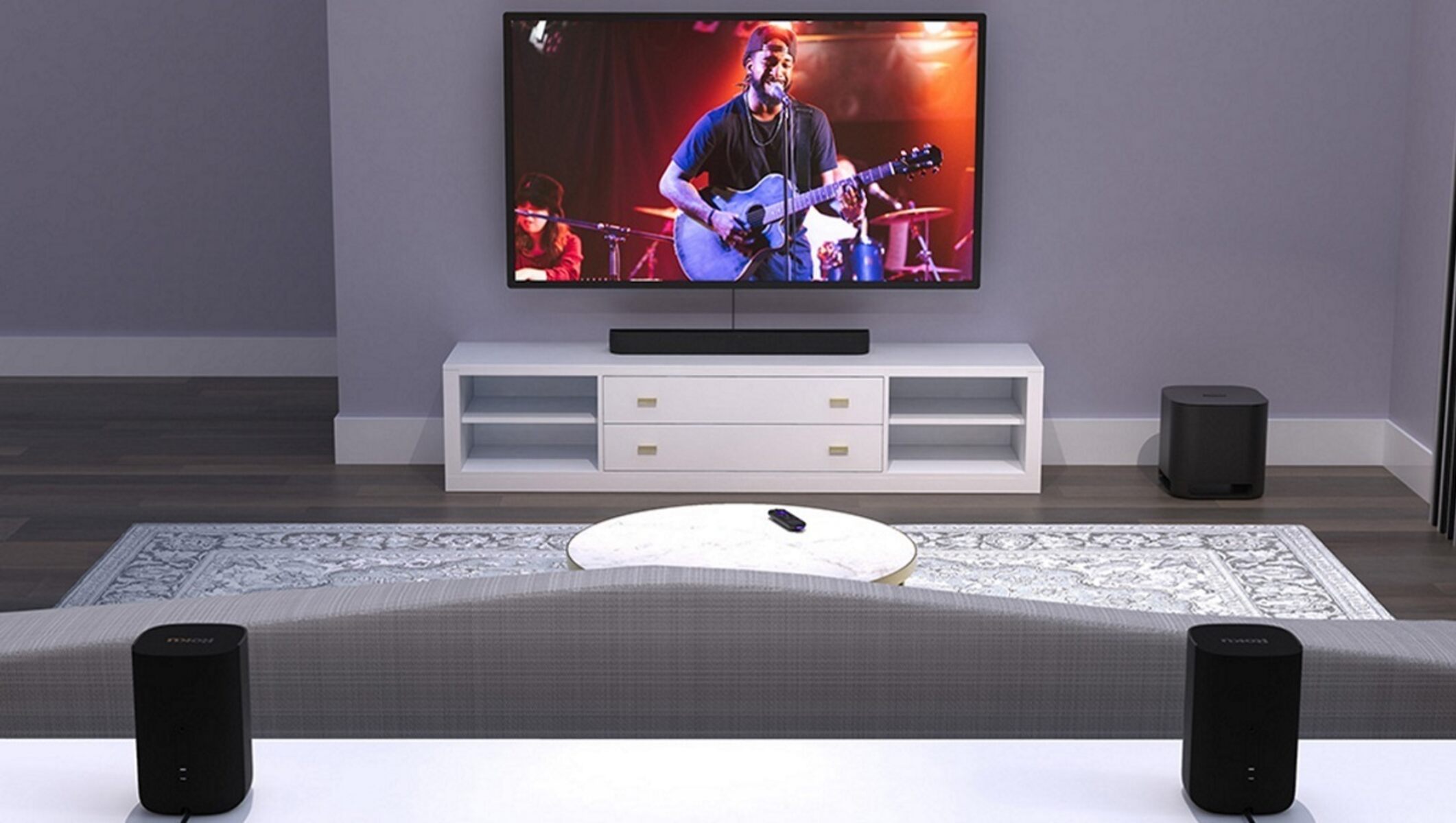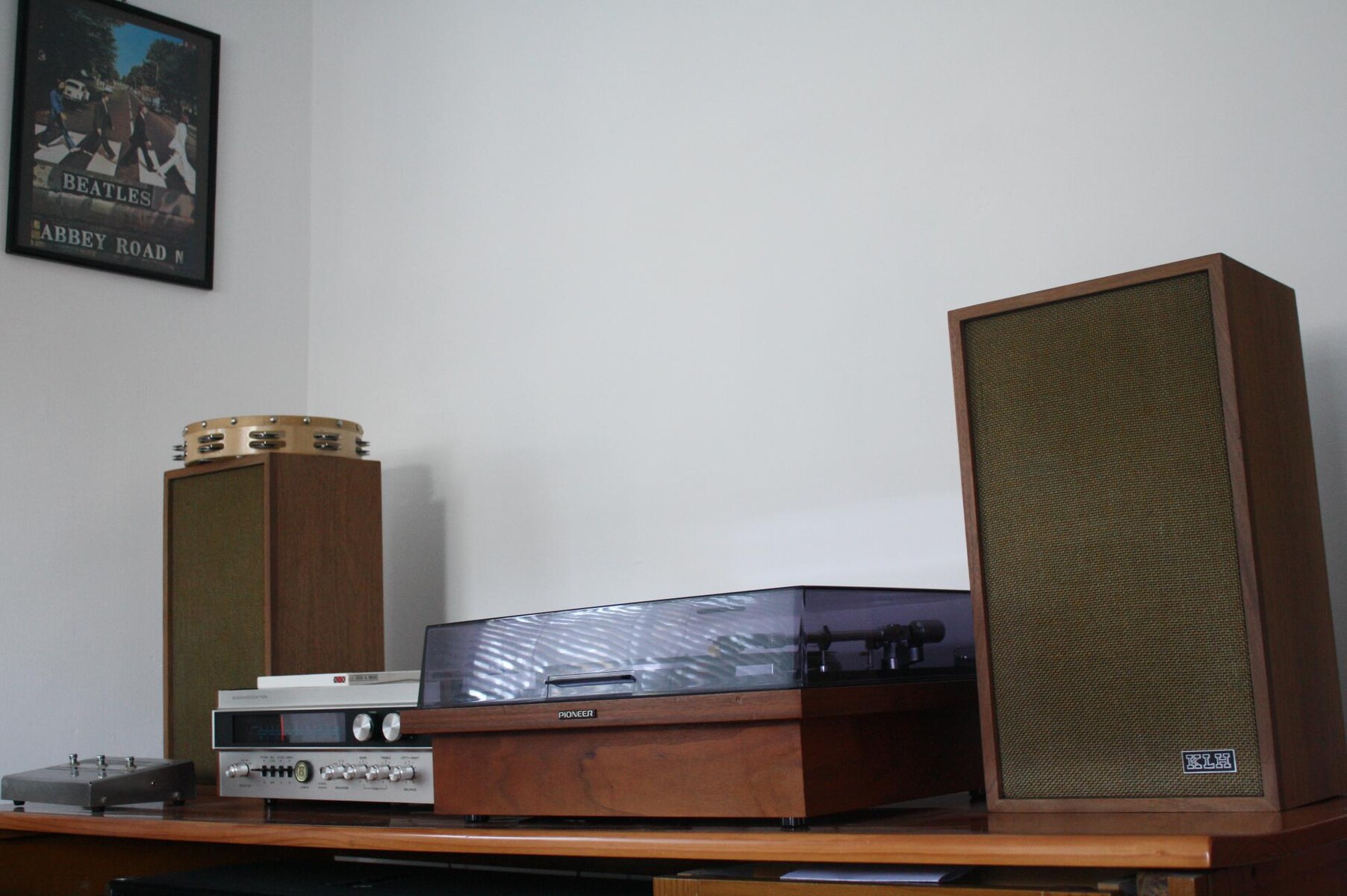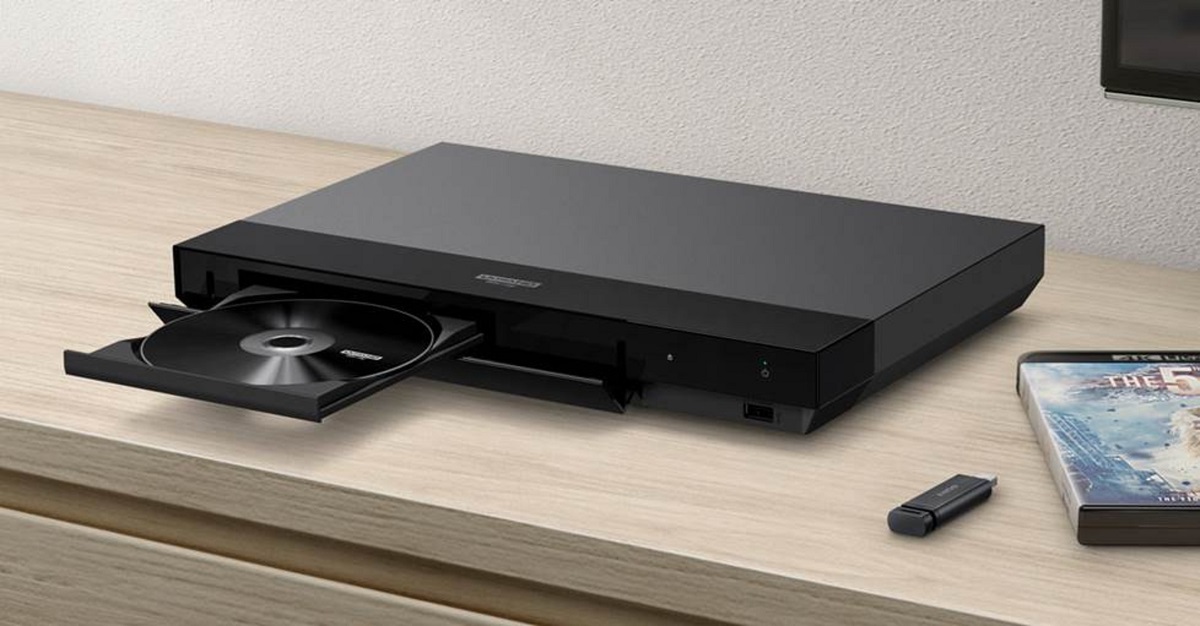Introduction
Welcome to the world of immersive audio experiences with Blu-Ray Surround Sound Systems. If you’re a movie enthusiast or a music lover looking to elevate your home entertainment, then you’re in the right place. In this article, we will delve into the world of Blu-Ray Surround Sound Systems, exploring what they are, the benefits they offer, and tips for choosing the right system for your needs.
When it comes to audio quality, regular TV or stereo speakers often fall short in delivering the full experience. That’s where Blu-Ray Surround Sound Systems come into play. These systems are designed to provide an immersive and realistic audio experience, bringing movies, music, and games to life with exceptional clarity, depth, and spatial positioning.
Gone are the days of settling for basic stereo sound. With a Blu-Ray Surround Sound System, you’re transported into the heart of the action, with sound coming from all directions. Whether it’s the thunderous roar of a race car, the subtle whisper in a suspenseful scene, or the vibrant beats in your favorite song, you’ll experience it all in incredible detail.
Blu-Ray Surround Sound Systems are not limited to just movie theaters or high-end audio setups. Thanks to advancements in technology, these systems are now more accessible and affordable for home use. You can create your own personal cinema or concert hall, right in the comfort of your living room or entertainment space.
In the following sections, we will discuss the key components of a Blu-Ray Surround Sound System, the benefits it offers, the factors to consider when choosing a system, and tips for optimizing its performance. So, get ready to take your audio experience to the next level with Blu-Ray Surround Sound Systems.
What is Blu-Ray Surround Sound System?
Blu-Ray Surround Sound System is a home audio setup that delivers a multi-channel audio experience, immersing you in a surround sound environment. It combines a Blu-ray player, multiple speakers, and an audio receiver to reproduce sound from different channels, creating a three-dimensional audio effect.
The Blu-ray player serves as the central hub of the system, allowing you to play high-definition Blu-ray discs, DVDs, and CDs. It also supports various audio formats, ensuring compatibility with a wide range of media.
A typical Blu-Ray Surround Sound System consists of multiple speakers strategically placed around the room. These speakers are responsible for creating the surround sound effect by projecting audio from different channels. The most common setup includes a center speaker, left and right front speakers, left and right surround speakers, and a subwoofer.
The center speaker is essential for delivering clear dialogue and producing sound that appears to come from the screen. The front speakers provide a wide soundstage and handle most of the audio effects. The surround speakers are responsible for creating an immersive experience by reproducing sound from behind or on the sides.
The subwoofer, also known as the LFE (Low-Frequency Effects) speaker, reproduces deep bass frequencies, adding depth and impact to explosions, musical scores, and other low-frequency sounds. It enhances the overall audio experience, making it more immersive and realistic.
Blu-Ray Surround Sound Systems utilize various audio processing technologies to enhance the sound quality and spatial effects. These technologies include Dolby Digital, DTS (Digital Theater Systems), and Dolby Atmos, which provide a more dynamic and enveloping audio experience.
With a Blu-Ray Surround Sound System, you can enjoy the full spectrum of sound, from the subtlest details to the thunderous booms, all with exceptional clarity and precision. Whether you’re watching a movie, playing a video game, or listening to music, the immersive audio experience takes your entertainment to a whole new level.
Now that you have a basic understanding of what a Blu-Ray Surround Sound System is, let’s explore the benefits and advantages it offers.
Benefits and Advantages of Blu-Ray Surround Sound System
A Blu-Ray Surround Sound System offers a plethora of benefits and advantages that enhance your audiovisual experience and take it to a whole new level. Here are some of the key benefits:
- Immersive Audio Experience: One of the major advantages of a Blu-Ray Surround Sound System is the immersive audio experience it provides. By placing speakers strategically around the room, the system creates a three-dimensional soundstage, immersing you in the action and making you feel like you’re part of the movie or music performance.
- Enhanced Sound Quality: Blu-Ray Surround Sound Systems are designed to deliver high-quality audio with exceptional clarity, detail, and depth. The combination of multiple speakers and advanced audio processing technologies ensures that you hear every nuance and sound effect as intended by the creators.
- Realistic Spatial Effects: With the help of surround sound technology, Blu-Ray Surround Sound Systems reproduce audio from different channels, creating a realistic and spatial sound environment. This means that you can pinpoint the origin of specific sound effects, such as footsteps approaching from behind or a car zooming by on the left side of the screen.
- Compatibility and Versatility: Blu-Ray Surround Sound Systems are compatible with various media formats, including Blu-ray discs, DVDs, CDs, and streaming services. This versatility allows you to enjoy a wide range of content, from movies and TV shows to music and online videos, all with immersive surround sound.
- Home Theater Experience: Setting up a Blu-Ray Surround Sound System in your home can transform your living space into a mini home theater. You can recreate the cinematic experience, complete with rich audio and impressive visual quality, without the hassle of going to a crowded theater.
- Multi-room Audio: Some Blu-Ray Surround Sound Systems offer multi-room audio capabilities, allowing you to extend the audio experience to other rooms in your home. You can have synchronized music playing throughout your house or enjoy a movie soundtrack in one room while others listen to music in different areas.
Whether you’re a movie lover, a music enthusiast, or a gamer, a Blu-Ray Surround Sound System offers a multitude of benefits that enhance your overall entertainment experience. From the immersive audio to the versatility and compatibility with various media formats, these systems provide the ultimate audio upgrade for your home.
Now that you understand the benefits of a Blu-Ray Surround Sound System, let’s dive into the components that make up this impressive audio setup.
Components of a Blu-Ray Surround Sound System
A Blu-Ray Surround Sound System consists of several key components that work together to deliver an immersive audio experience. Understanding these components will help you make informed decisions when selecting and setting up your system. Here are the main components:
- Blu-Ray Player: The Blu-Ray player serves as the central hub of the system. It allows you to play Blu-ray discs, DVDs, and CDs, and often supports streaming services and digital media playback. Look for a player that offers high-definition playback, supports the latest audio formats, and provides connectivity options for your other devices.
- Speakers: Speakers are essential for reproducing the sound in a Blu-Ray Surround Sound System. The typical setup includes multiple speakers strategically placed around the room. The main types of speakers are:
- Center Speaker: This speaker is responsible for delivering clear dialogues and ensuring that sound appears to come from the screen. It is usually positioned above or below the TV or screen.
- Front Speakers: The left and right front speakers provide the main audio output and create a wide soundstage. They handle most of the sound effects and are placed on either side of the TV or screen.
- Surround Speakers: These speakers are placed on the sides or behind the viewing area to provide the surround sound experience. They reproduce sound effects and ambient sounds, enhancing the immersion.
- Subwoofer: The subwoofer is responsible for reproducing low-frequency sounds or deep bass. It adds impact and richness to explosions, music, and other low-end effects.
- Audio Receiver: The audio receiver is the heart of the system, connecting all the components and processing the audio signals. It receives audio from the Blu-ray player and distributes it to the appropriate speakers. Look for a receiver that supports the audio formats you plan to use and offers ample connectivity options.
- Cabling: Proper cabling is crucial for the system’s performance. High-quality speaker cables, HDMI cables, and optical cables are commonly used to connect the speakers, Blu-ray player, and audio receiver. Ensure that the cables are of sufficient length and capable of delivering the audio quality you desire.
- Remote Control: A remote control allows you to easily navigate and control the Blu-ray player, audio receiver, and other connected devices. Look for a remote control that is user-friendly and gives you easy access to the system’s functions and settings.
When selecting the components for your Blu-Ray Surround Sound System, it’s essential to consider compatibility, audio quality, and budget. Look for components that work well together and suit your specific audio preferences and room dimensions. Now that we’ve covered the components, let’s move on to choosing the right Blu-Ray Surround Sound System for your needs.
Choosing the Right Blu-Ray Surround Sound System
When it comes to choosing a Blu-Ray Surround Sound System, there are several factors to consider to ensure you find the right system that suits your needs and preferences. Here are some essential tips to help you make an informed decision:
- Budget: Determine your budget range for the system. Blu-Ray Surround Sound Systems can vary significantly in price, so having a budget in mind will help narrow down your options and prevent overspending.
- Room Size and Layout: Consider the size and layout of the room where you plan to set up the system. Different room sizes may require different speaker setups to optimize the audio experience. For larger rooms, consider systems with additional surround speakers or wireless speaker options for easy placement.
- Audio Quality and Compatibility: Check the system’s audio quality and compatibility with various audio formats. Look for systems that support high-definition audio formats like Dolby Atmos or DTS:X for a more immersive audio experience. Ensure that the system is compatible with the media you plan to play, such as Blu-ray discs, DVDs, or streaming services.
- User-Friendly Features: Consider the ease of use and user-friendly features of the system. Look for systems that offer intuitive controls, easy setup processes, and user-friendly interfaces. Remote control functionality and smart home integration can also enhance the overall user experience.
- Brand Reputation and Customer Reviews: Research the reputation of different brands and read customer reviews to gauge the quality and reliability of the system. Pay attention to customer feedback regarding audio quality, durability, and customer support.
- Connectivity Options: Check the system’s connectivity options and make sure they align with your needs. Look for systems with HDMI ports, optical audio inputs, USB ports, and wireless connectivity options. This will ensure compatibility with your TV, streaming devices, gaming consoles, and other audio sources.
- Warranty and Support: Lastly, consider the warranty and customer support provided by the manufacturer. A solid warranty can give you peace of mind in case of any unexpected issues, while reliable customer support will be helpful in resolving any questions or concerns you may have.
By considering these factors, you can narrow down your options and find the Blu-Ray Surround Sound System that meets your requirements and enhances your home audio experience. Take your time to research and compare different systems to make an informed decision.
Now that you’ve chosen the right Blu-Ray Surround Sound System, it’s time to set it up and optimize its performance. In the next section, we will discuss various tips and techniques for setting up your system and getting the most out of it.
Setting Up a Blu-Ray Surround Sound System
Setting up your Blu-Ray Surround Sound System correctly is vital to ensure optimal audio performance. Follow these steps to set up your system:
- Choose the Right Location: Select a suitable location for your Blu-Ray player, audio receiver, and speakers. Ensure that the speakers are positioned at the recommended angles and distances for optimal surround sound effect. Place the center speaker above or below the TV, the front speakers on either side of the screen, and the surround speakers around the viewing area.
- Connect the Blu-Ray Player: Connect the Blu-Ray player to your TV using an HDMI cable. This will allow you to play your Blu-ray discs and other media on the TV screen while transmitting audio to the audio receiver.
- Connect the Audio Receiver: Use HDMI or optical audio cables to connect the audio receiver to the TV, ensuring proper audio input and output. Connect the audio outputs of your Blu-Ray player to the audio inputs of the receiver. Ensure that the receiver is set to the appropriate input source.
- Connect the Speakers: Connect each speaker to the corresponding speaker output on the audio receiver. Follow the color-coded or labeled connections for an accurate setup. Ensure that the positive and negative terminals of the speaker cables are properly connected to the corresponding terminals on the speakers and receiver.
- Configure the Audio Settings: Access the audio settings on your Blu-Ray player and audio receiver to optimize the audio output. Set the correct speaker configuration, select the appropriate audio format (such as Dolby Atmos or DTS:X), and adjust speaker levels and distances to achieve a balanced sound stage.
- Test the System: After the initial setup, play various audio and video sources to ensure that the audio is properly distributed among the speakers. Check if the center speaker delivers clear dialogue, the front speakers create a wide soundstage, the surround speakers provide immersive effects, and the subwoofer reproduces deep bass accurately.
- Optimize the Room Acoustics: Consider room acoustics by adding acoustic treatments such as curtains, rugs, or sound-absorbing panels to minimize sound reflections and echoes. Experiment with speaker placement and orientation for the best sound quality in your room.
- Calibrate the System: If your Blu-Ray Surround Sound System has an automated calibration feature, use it to optimize the audio performance. These calibration systems analyze the room’s acoustics and adjust the speaker levels and timings for an accurate sound reproduction.
Remember to consult the user manuals or manufacturer’s instructions for detailed setup guidelines specific to your Blu-Ray Surround Sound System. Proper setup and configuration will ensure an immersive and enjoyable audio experience.
Now that your system is set up, let’s explore some tips for optimizing its performance and addressing common troubleshooting issues in the next section.
Tips for Optimizing the Performance of a Blu-Ray Surround Sound System
To get the best audio experience from your Blu-Ray Surround Sound System, follow these tips to optimize its performance:
- Positioning: Ensure that the speakers are correctly positioned according to the manufacturer’s guidelines. Experiment with speaker placement and angles to achieve the best soundstage and balance in your room.
- Speaker Levels: Adjust the individual speaker levels using the audio receiver’s settings. Fine-tune the levels to achieve a balanced sound and ensure that no single speaker overpowers the others.
- Bass Management: Configure the bass management settings on your audio receiver to optimize the performance of the subwoofer. Adjust the crossover frequency and level to achieve a seamless blend between the main speakers and the subwoofer.
- Room Acoustics: Consider adding acoustic treatments to your room to minimize sound reflections and improve the overall sound quality. Using curtains, rugs, or sound-absorbing panels can help reduce echo and enhance the clarity of the audio.
- Listening Position: Position yourself at the center of the surround sound system to experience the optimal audio effects. Sit at a reasonable distance from the speakers to achieve an immersive soundstage without sitting too close or too far away.
- Media Selection: Opt for media that supports high-definition audio formats such as Dolby Atmos or DTS:X to fully utilize the capabilities of your Blu-Ray Surround Sound System. These formats provide immersive surround sound and deliver a more engaging audio experience.
- Regular Calibration: Perform regular calibration of your Blu-Ray Surround Sound System to maintain optimal performance. Calibration ensures that the speaker levels, distances, and sound equalization are accurately adjusted for the specific room acoustics.
- Keep System Updated: Check for firmware updates for your Blu-Ray player, audio receiver, and speakers. These updates may include performance improvements or bug fixes that can enhance the overall performance and compatibility of your system.
- Proper Maintenance: Keep your Blu-Ray Surround Sound System clean and free from dust. Regularly check and clean the speakers, cables, and audio receiver connections to avoid any interference or degradation in sound quality.
- Optimal Volume Levels: Avoid excessively high volume levels for extended periods to prevent speaker damage and maintain audio clarity. Take breaks to rest your ears during long listening sessions.
By implementing these tips, you can optimize the performance of your Blu-Ray Surround Sound System and enjoy an immersive and exceptional audio experience.
However, even with proper optimization, it’s possible to encounter troubleshooting issues. In the next section, we will discuss some common issues that may arise and provide solutions to address them.
Common Troubleshooting Issues and Solutions
While Blu-Ray Surround Sound Systems generally offer excellent audio performance, you may occasionally encounter some common troubleshooting issues. Here are a few common issues and their potential solutions:
- No Sound: If you’re facing a complete absence of sound, check the connections between the Blu-Ray player, audio receiver, and speakers. Ensure that all cables are securely connected and that the audio receiver is set to the correct input source. Verify the audio settings on both the Blu-Ray player and the audio receiver to ensure that the audio is being correctly routed.
- Imbalanced Sound: If you notice imbalanced sound levels or one speaker overpowering the others, check the speaker levels on your audio receiver. Adjust the individual speaker levels until you achieve a balanced soundstage. You may also need to check the speaker wiring and connections to ensure that they are properly connected.
- No Surround Sound: If the surround sound effects are not working or are weak, confirm that your source media supports surround sound formats and that the media player settings are configured correctly. Additionally, verify that the surround speakers are properly positioned, and the audio receiver is set to output in surround sound mode.
- Low Bass Output: If you find that the bass output from the subwoofer is weak or nonexistent, check the bass management settings on your audio receiver. Ensure that the crossover frequency and level are set appropriately to allow the subwoofer to reproduce the low frequencies effectively.
- Audio Sync Issues: If you notice an audio delay or sync issues between the audio and video on your Blu-Ray player, check the audio settings on both the player and the TV. Some TVs have audio delay settings that can compensate for any delay in the audio signal. Adjust this setting to synchronize the audio and video playback.
- Audio Distortion: If you experience audio distortion or crackling sounds, ensure that the speaker wires are properly connected, with no loose connections or frayed wires. Additionally, check the speaker impedance settings on your audio receiver and make sure they are within the recommended range for your speakers.
- Static or Interference: If you encounter static or interference in the audio, check for any sources of interference in the room, such as other electronic devices or power cables. Keep your speaker wires away from power cables or sources of electromagnetic interference to minimize the chances of audio disruptions.
If you’re still facing issues after attempting the suggested solutions, refer to the user manuals of your Blu-Ray player, audio receiver, and speakers for further troubleshooting steps. You can also contact the manufacturer’s customer support for specialized assistance.
By addressing these common troubleshooting issues, you can ensure that your Blu-Ray Surround Sound System continues to deliver a high-quality audio experience.
Conclusion
A Blu-Ray Surround Sound System brings the magic of immersive audio right into your home. With its ability to create a captivating surround sound experience, this audio setup allows you to fully immerse yourself in movies, music, and games. By understanding the components, benefits, and considerations associated with these systems, you can make an informed decision when selecting the right system for your needs.
Setting up a Blu-Ray Surround Sound System requires careful positioning of speakers, connecting cables correctly, and configuring audio settings. Optimizing the performance of the system involves speaker calibration, considering room acoustics, and selecting high-quality media. In case of troubleshooting issues, knowing how to troubleshoot common problems will ensure a seamless audio experience.
Remember to consider factors like budget, room size, and brand reputation when choosing a Blu-Ray Surround Sound System. Always follow the manufacturer’s instructions and consult user manuals to ensure proper setup and calibration. Regular maintenance and updates will help keep your system performing at its best.
With a well-implemented Blu-Ray Surround Sound System, you can transform your home entertainment into a truly immersive and extraordinary experience. So, sit back, relax, and let the incredible audio of your Blu-Ray Surround Sound System transport you to new dimensions of entertainment and enjoyment.







